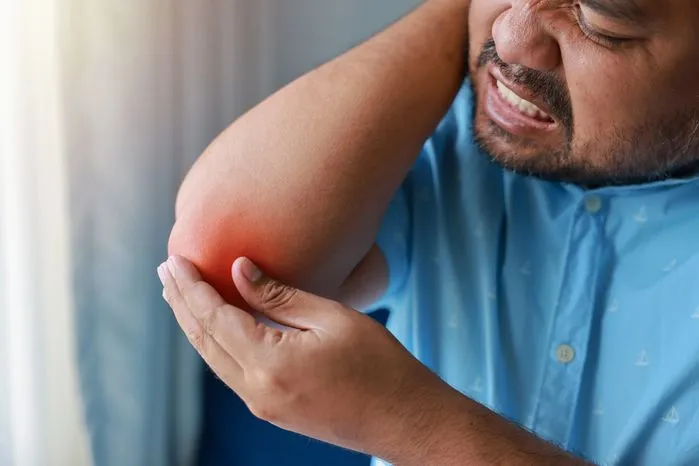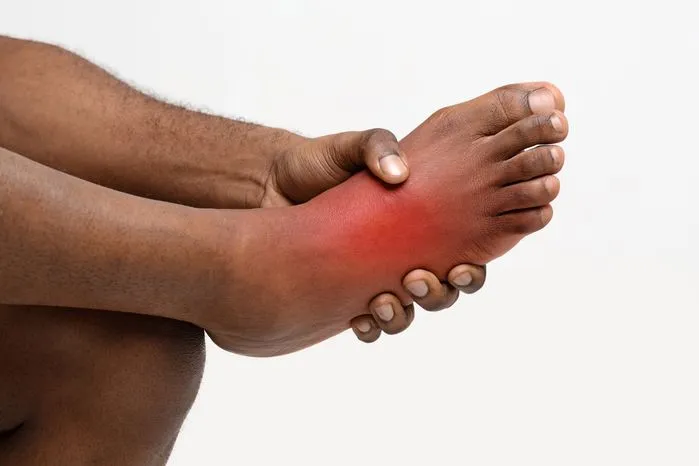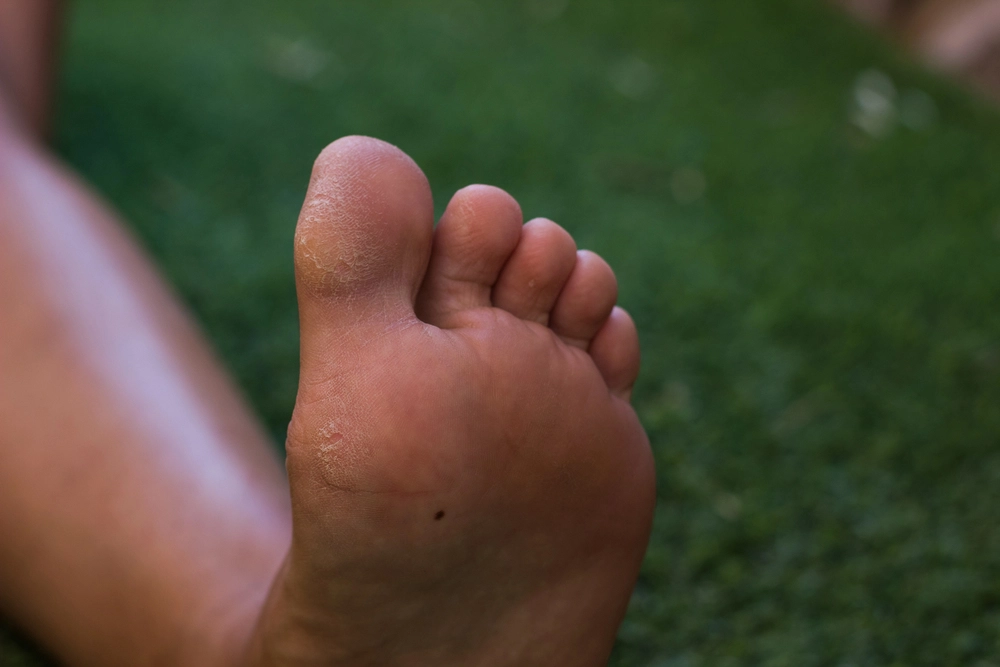
Releford Institute’s Opinion on The Treatment and Removal of Intractable Plantar Keratosis
At RelefordInstitute.com, we focus on identifying what’s causing the pressure and callus buildup. Choosing proper footwear and using custom orthotics help reduce pressure points. Regular debridement, along with moisturizing and exfoliating, works to soften and minimize keratosis over time. Adding padded insoles offers extra comfort and protection. Consistency is key, and by addressing the root cause, you can reduce pain and improve your quality of life.
Key Takeaways
- Uneven weight distribution during physical activities such as walking or standing often results in a painful foot condition known as Intractable Plantar Keratosis.
- This ailment is often visible as hardened skin formations on feet, causing discomfort or even intense pain.
- Over-the-counter products containing salicylic acid are among the first line of treatment options. Other remedies may involve prescription medications, along with practicing good hygiene for your feet.
- For cases that prove to be severe, medical interventions like cryosurgery, electrosurgery, or traditional excision could be necessary, expecting recovery periods that often last several weeks.
- Maintaining cleanliness after treatment is essential, paired with pain relievers when necessary.
- Regularly scheduled follow-up appointments promote healing and prevent potential complications.
Understanding Intractable Plantar Keratosis
Intractable Plantar Keratosis (IPK), a localized, painful lesion often found on the foot's weight-bearing areas, is a condition frequently seen in podiatric practice. Abnormal pressure distribution during standing or walking often leads to this ailment, causing skin thickening due to persistent pressure and friction.
Structural foot abnormalities like hammertoes or bunions, along with inappropriate footwear putting excess stress on the foot's particular regions, are some risk factors. High arches or rigid, flat feet also increase the risk as these conditions may cause uneven weight distribution across the foot.
Preventing it requires a comprehensive strategy. It starts with choosing the right footwear, which includes ample toe box space and quality arch support. Early signs of this condition are discoverable through regular foot inspections while maintaining a healthy weight helps reduce foot pressure. Orthotic devices designed to redistribute pressure may also help.
Symptoms and Diagnosis Process
Proper management of Intractable Plantar Keratosis starts with symptom recognition. Hardened, callous-like skin formations typically characterize this disorder, appearing on foot areas that bear pressure.
Take note that similar symptoms may indicate different foot conditions, making differential diagnosis necessary. An examination by a healthcare provider includes assessing the physical characteristics of the lesion like size, hardness, and location. Questions regarding symptom duration and discomfort levels during daily activities might also be part of the questionnaire.
Diagnosing Intractable Plantar Keratosis allows the healthcare provider to discuss subsequent steps. Despite the distressing symptoms, you should remember that this condition is common and treatable. Success lies in early detection, and diagnosis, followed by prompt treatment - all initiated by symptom recognition.
Common Treatment Options
Intractable Plantar Keratosis management often requires combining home remedies with professional medicinal interventions. Initial defense mechanisms may include easily accessible salicylic acid pads or ointments, purposefully created to soften thickened skin and facilitate its removal.
Medical professionals usually employ stronger prescription medications, which are topical. These treatments often dissolve a part of the thick skin. For those preferring non-pharmaceutical methods, alternative practices like acupuncture or homeopathy are among their options. Regardless of the treatments, always consider getting them from a licensed doctor. They have the experience and education to back their medical treatments.
Surgical Removal Procedures
Treatment methods for Intractable Plantar Keratosis primarily employ topical therapies and preventive measures. However, severe cases require a more robust approach. For such persistent conditions, surgical removal procedures offer an effective solution.
Surgical techniques to remove Intractable Plantar Keratosis lesions include several options. These strategies include cryosurgery, electrosurgery, and traditional surgical excisions.
Recovery timelines for these procedures depend on the method employed and the patient's overall health status. Generally, recovery periods span a few weeks, during which patients may feel discomfort and need to care for the surgical site to prevent infection.
Tips for Post-Treatment Care
Adherence to post-operative care guidelines facilitates the process of healing and minimizes infection risks or other post-surgical issues.
Use over-the-counter pain relievers to ease discomfort, but steer clear of aspirin due to its potential to increase bleeding risks. Immediate contact with the healthcare provider is necessary if the area turns red, swells, or causes pain, as these conditions could indicate an infection.
Scheduled appointments with your healthcare provider are a necessary part of post-treatment care. This allows for progress monitoring and early addressing of possible complications. All instructions regarding wound care, restrictions on activity, and medication use should be strictly followed.
Frequently Asked Questions
How do you get rid of intractable plantar keratosis?
You need to consult a podiatrist or dermatologist to get rid of them. They may recommend treatments such as salicylic acid applications, cryotherapy, or laser therapy. Regularly using a pumice stone also helps remove the hard skin, but it's important to moisturize later to avoid drying out the skin.
What shoes are best for intractable plantar keratosis?
Shoes best suited for intractable plantar keratosis are those that offer good support and cushioning, like orthopedic or therapeutic shoes. These help distribute weight evenly across the foot, reducing pressure on the affected areas. Shoes should also have a spacious toe box to avoid rubbing and friction.
What does an IPK look like?
It typically appears as a hard, round area of thickened skin, often likened to a corn or callus. It's usually found on the ball of the foot or under the big toe. The keratosis may be whitish or yellowish and causes pain when pressured.
How do you treat keratosis on your feet?
To treat keratosis, start by soaking your feet in warm water to soften the skin. After drying, apply a keratolytic cream or a product containing salicylic acid to help exfoliate and dissolve the thickened skin. Always follow with a good moisturizer to maintain healthy skin.
Is an IPK the same as a corn?
An IPK is similar to corn due to similar thickened areas of skin on the foot. However, an IPK is typically more persistent and resistant to treatment than a corn. It also tends to be deeper and more focused on a specific point of pressure, causing greater discomfort.
What is the best cream for plantar keratosis?
The best cream is one that contains a keratolytic agent such as salicylic acid. This helps to break down the thickened skin, making it easier to remove.
Is IPK painful?
Yes. This is because the thickened skin creates a pressure point that causes discomfort, particularly when standing or walking. The pain varies from mild discomfort to a sharp, stabbing sensation.
How to treat intractable plantar keratosis?
There are several ways to treat intractable plantar keratosis. These include using keratolytic creams, cryotherapy, laser therapy, and mechanical debridement.
Is plantar keratosis the same as plantar warts?
The two are not the same. While both involve thickened skin on the foot, plantar warts have a rough surface with tiny black dots due to the virus. Plantar keratosis, on the other hand, is not and typically appears as a hard, smooth callus.
What causes IPK foot?
The cause of IPK is usually abnormal pressure distribution on the foot. This is due to factors such as biomechanical abnormalities, ill-fitting footwear, or certain foot deformities. The pressure causes the skin to thicken as a protective response, leading to IPK.
How do I get rid of hyperkeratosis in my feet?
To get rid of hyperkeratosis on your feet, it's important to regularly exfoliate the skin using a pumice stone or a foot file. You should also apply a cream containing urea or salicylic acid to help soften and break down the thickened skin. In persistent cases, a healthcare professional may recommend treatments such as cryotherapy or laser therapy.
What is a keratosis on the bottom of the foot?
A keratosis on the bottom of the foot is a hardened, thickened area of skin, usually caused by excess pressure or friction. It's often found on the ball of the foot or under the big toe. This hard skin can cause discomfort and pain, especially when walking or standing.


















